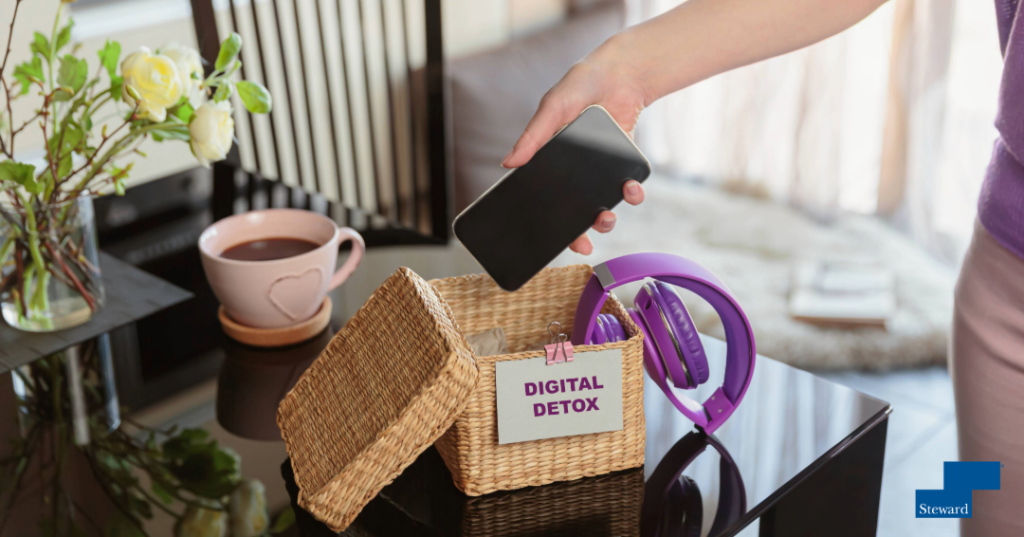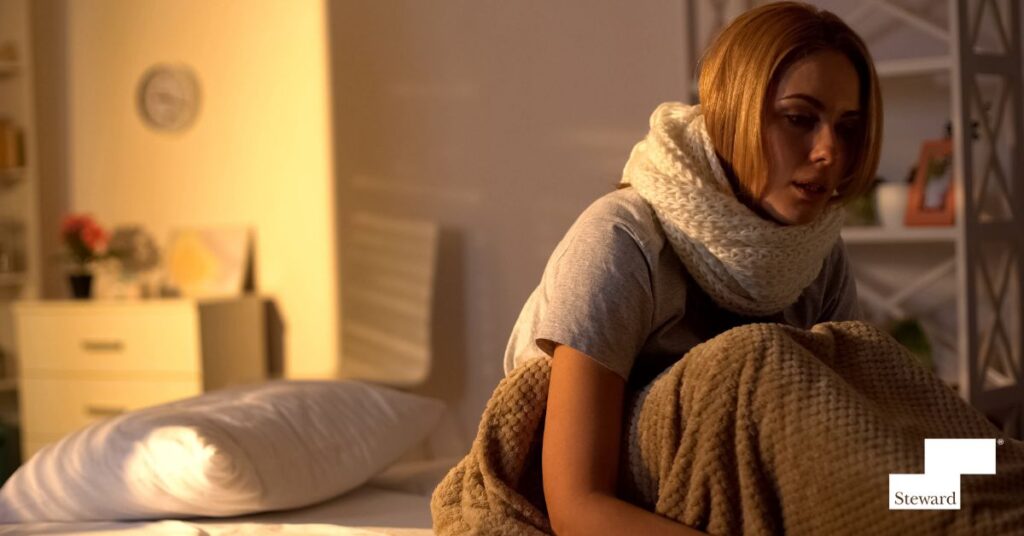On Sunday evenings, my family members who live locally get together for dinner and game night. One of my love languages toward my family is cooking, and because of this, I am usually in the kitchen. The rest of the family spreads out around the house and in the backyard until dinnertime. Usually, there is someone around whom I can send on the task of rounding everyone up when dinner is ready. But on a recent Sunday, no one was near the kitchen. Instead of calling out for some help or walking around myself, I texted everyone. As soon as I hit send, I thought, “What are you doing?!?!?” Not because texting is necessarily bad, but because one of our Sunday evening rules is “no electronics, unless it’s part of a family game.” And the person in the house who is the biggest nag when it comes to “put up your phone” just made everyone take out their phone. I’m still kicking myself.
After noticing other families when we were out eating, my husband and I made this rule years ago, when our kids were teenagers. So many of them were not talking or interacting as a family, but instead were looking at their individual phones, tablets, or gaming devices. So, much to the consternation of my kids, it became the rule: no electronics at the dinner table. Now that they are parents, they’re starting to understand why. I’m so glad we made that a practice and keep up with it because an increasing body of research is showing that taking a break from electronic devices, also known as a “digital detox,” is a really good practice for improving mental health and decreasing stress.
The statistics about our use of electronics are concerning. According to research by the Nielsen Company, the average adult in the U.S. spends about 11 hours every day listening to, watching, reading, or interacting with electronic devices. In the 2017 Stress in America Survey conducted by the American Psychological Association, 18% of adults cited technology use as their number one stressor. One study that looked at sleep and digital devices found that children who use digital devices at bedtime have shorter and poorer quality sleep. Adults who use electronics while in bed have an increased likelihood of anxiety, insomnia, and shorter sleep duration. More time spent on digital devices by teens has also been linked to increased symptoms of ADHD, conduct disorders, and decreased self-control. The use of mobile technologies and the internet to do work while away from work has been shown to decrease job satisfaction while increasing feelings of job stress and burnout. The comparisons of social media have also been shown to decrease self-esteem and add to a phenomenon labelled “Fear of Missing Out” (FOMO).
At their extreme, electronic devices may cause even larger mental health issues. While it is not yet formally recognized by the psychological community as a diagnosis, there is an increasing belief among experts that electronic overuse can be part of an addiction cycle, with all the negative results that addictions can cause not just to mental health but also to physical health. Those beliefs are fuelled by research, such as a poll conducted by Common Sense Media showing 50% of teens polled felt they were addicted to their mobile device. In that same poll, 78% of teens said they checked their digital devices every hour. There is also an increasing body of evidence that limiting access to devices, particularly social media, decreases symptoms of depression and loneliness in both children and adults.
A digital detox can be a complete break from electronics for a few days. But, for most people, stepping completely away from electronics is not possible. The great news is that you can still achieve the same results by setting boundaries when it comes to electronic use. As you think about setting boundaries, here are some things to consider. The first is to be realistic. If you have a job that is 24/7 on call, turning off your phone for an hour or two might not be something you can do. Think of the ways you can realistically disconnect, like by keeping your phone on but turning off other notifications. Second, set limits. Think of the times that you can realistically disconnect, stick to it, and let the people in your life know about your boundaries. There are some great tricks on some newer devices that can help you with this, like the focus settings on Apple devices. Airplane mode is another great trick that lets you have access to some features, like the ability to listen to music, but limits other features like calls and texts. Third, remove distractions, particularly in the form of notifications. For instance, do you really need to know about every post on your social media account? Research is showing that limiting social media use to 30 minutes per day significantly improves well-being. You might also consider leaving your phone behind for a brief period. Studies have found that even if it’s not being used, the presence of a mobile phone decreases empathy and conversation quality because of the potential for distraction.
Basically, a digital detox is reducing your exposure to electronics in a way that works for you and improves your mental well-being. Whether it’s a complete fast or just cutting down, every little change you make in reducing your interaction with electronics will improve your health. It’s a simple “one change at a time” thing that can help you reap big rewards.

By: Carol A. Cates, MSN, MBA, RN
Chief Nursing Officer
Odessa Regional Medical Center
To find a doctor or schedule an appointment, visit Steward DoctorFinder™.




